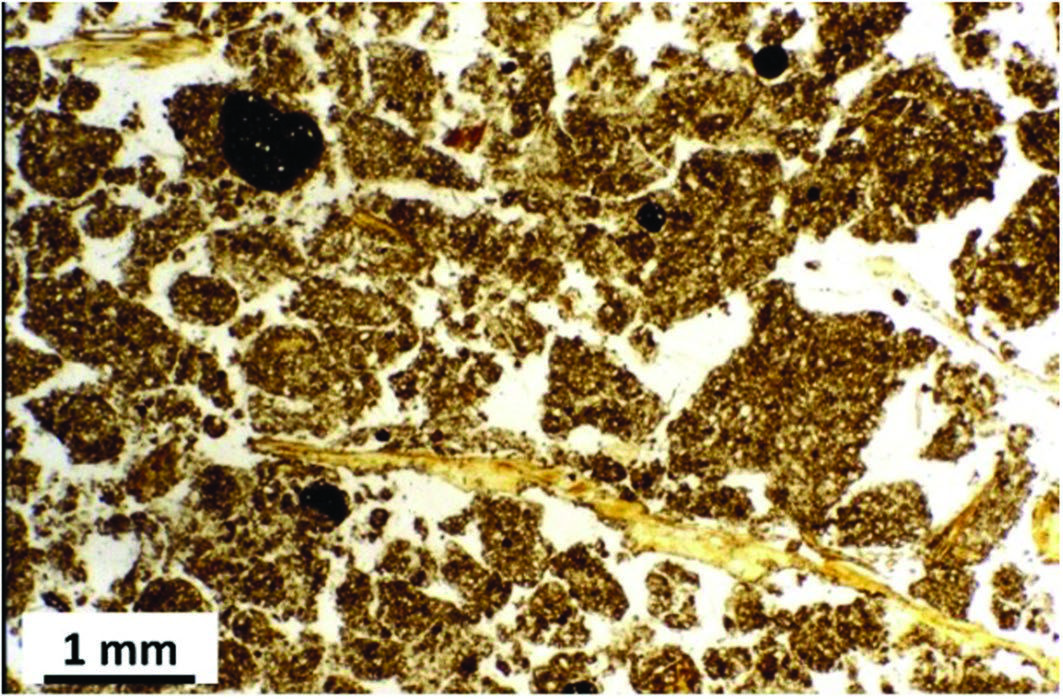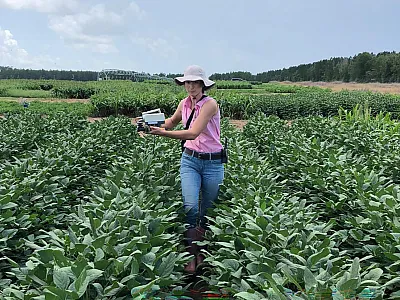Rediscover Soil Micromorphology!

What can you see by looking at undisturbed soil using a light microscope? As shown in the image on this page, you would see its channels and chambers, its aggregates and particles, its organic matter and minerals, and its roots and fauna. Soil microscopy allows us to study the in situ architecture of soil and to see the confluence of chemical, biological, and physical processes that create the functioning soil.
A hands‐on, one‐day workshop, entitled “Rediscovering Soil Micromorphology: A Practical Introductory Workshop on Soil Architecture in Thin Sections,” will be offered in conjunction with the 2023 SSSA Annual Meeting in St. Louis, MO, on Saturday, Oct. 28, 2023. This workshop will introduce researchers from any subdiscipline of soil science to standard descriptions and interpretations of soil thin sections as seen through a light microscope. Experts with decades of experience interpreting thin sections will lead participants in learning the basics of identification and interpretation of pedological features at micrometer to millimeter scales. Participants will engage in active learning exercises designed to reinforce concepts and practice micromorphological interpretations of photomicrographs.
Soil micromorphology is the study of soil and regolith components, features, and fabrics at microscopic scales and has been an important tool over the last century in shedding light on:
- Origins of soil structural units and pores
- Impacts of management practices on soil morphology
- Genesis of diagnostic horizons
- Long‐term hydrological dynamics
- Land‐surface stability and geomorphic processes
- Mineral weathering
- Interpretation of paleosols Soil classification
Knowledge Gap in a Critical Area
Because soil micromorphology provides a framework to systematically describe and interpret arrangements of soil particles, pores, and organisms, the applications of these tools touch virtually every aspect of soil science. While the number of practitioners utilizing micromorphological techniques and interpretations has increased in some other disciplines (notably archaeology), it has decreased in soil science over the past few decades. This creates a significant knowledge gap at a time when investigators increasingly recognize the need for greater consideration of soil architecture as the key to understanding the integration of soil physical, chemical, and biological processes.
The workshop consists of two ~three‐hour sessions (Saturday, October 28, 8:45 am–4:45 pm) that will highlight micromorphological descriptions of soil fabrics, structure, pores, and features relevant to interpreting physical, chemical, and biological processes in A and B horizons. By the end of the workshop, participants will be familiar with basic terminology and gain a foundational understanding of the interpretive approaches relevant to pedological features in thin sections.
With a focus on light microscopy, the workshop is directed to those new to soil micromorphology, especially students, postdocs, and early career faculty. The workshop is intended to give participants an introduction to basic terminology in describing soil architecture; lay a foundation for interpreting soil physical, chemical, and biological processes from thin sections; and gain an appreciation for the practical application of soil micromorphological analyses to research questions that extend across soil science. The breadth of its relevance is indicated by the breadth of SSSA divisions that are co‐sponsors: Soil Mineralogy; Pedology; Soil Chemistry; Soil Physics and Hydrology; Forest, Range and Wildland Soils; and Wetland Soils.
The fee is $45 ($55 after Sept. 20) and includes morning and afternoon refreshment breaks, an active learning workbook, and a copy of Guidelines for Analysis and Description of Soil and Regolith Thin Sections (2nd ed.) by Georges Stoops (2021). Lunch is on your own. Contact Daniel Hirmas at https://bit.ly/RediscoveringSoilMicromorphology or visit https://www.acsmeetings.org/workshops#Saturday for more information on the workshop.
Text © . The authors. CC BY-NC-ND 4.0. Except where otherwise noted, images are subject to copyright. Any reuse without express permission from the copyright owner is prohibited.











